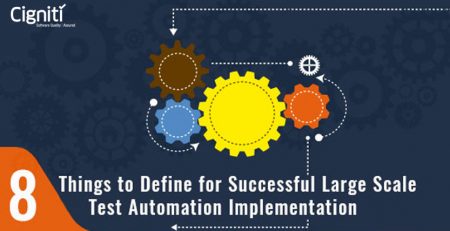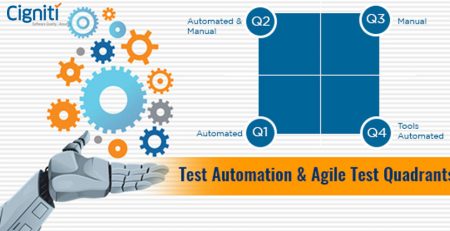Web Services Automation Testing Framework, Challenges & Benefits
|
Listen on the go!
|
Web services provide a standard means of interoperating between software applications on various platforms and frameworks. These services form the basis of a connection technology such that services are connected together into a service-oriented architecture (SOA). Further, services communicate using web services, the most–used connection technology of SOA. Web services effectuate a standardized way of integrating web-based applications using XML, Simple Object Access Protocol (SOAP), Web Services Description Language (WSDL), and UDDI open standards over an internet protocol.
A web service is offered by an electronic device to another electronic device, communicating with each other via the World Wide Web. It is also true that a failed web service wreaks havoc not only for the managers but also for the administrators responsible for the server’s well–being. A failure also causes problems for clients who are trying to call a particular web service.
Repositories, messaging, and services are the most essential primary elements of web services. Since web services are distributed over networks and applications, the testing requirements must include the interfaces.
Web services are inherently vulnerable to additional risks in integration and interoperability. They can be implemented using any programming language on any platform, provided that a standardized XML interface description called WSDL is available. A standardized messaging protocol called SOAP is also used at the same time. Web services often run over HTTP but may run over other application layer transport protocols. Automating web services testing facilitates the reduction of overall testing efforts.
What are the challenges faced by web services?
- Lack of assurance of trustworthiness
- Improper provision of client’s input parameters
- Malicious users can manipulate the different parameters at times to draw unauthorized information
- Unavailability of source code hinders white-box testing
Web Services Testing
Web services provide seamless connections from one software application to another over private intranets and the Internet. Web services testing considers functionality and load aspects to check how a web service performs for single clients and scales as the number of clients accessing it increases.
Testing of web services is helpful to prevent late detection of errors, which requires complex and costly repairs. It enables the detection of errors, evaluation, and approval of system qualities at an earlier stage. An automated test approach helps to repeat tests whenever needed efficiently. Test automation will be essential to a sound and efficient development process for assessing web services’ functionality, performance, and scalability.
Web services testing includes:
- Generate the client or skeleton code for the web service
- Define the required test inputs
- Invoke the web service using the client or skeleton code
- Client or skeleton code generation and response verification
- Verify that the actual response is similar to that of the expected outcome
Web services testing tools
Various web services testing tools are available, such as SoapUI, TestMaker, WebInject, etc. These tools are built on open–source tools/libraries/frameworks and thus help reduce overall costs and increase automation efficiency by minimizing initial coding effort. These tools help to create and execute automated functional, regression, compliance, and loading tests quickly. Finally, they help reduce dependency on technically skilled resources.
In this fast–paced world, a quicker test cycle at a lower cost is vital to stay competitive. Thus, reusable test automation frameworks coupled with open-source tools and technologies are crucial to shrinking test cycle time and related expenses.
There are web services test automation frameworks designed and developed by many testing service providers, and adopting them reflects more effectiveness. Some of their essential features & benefits are detailed below.
Web services test automation framework features
- Customizable frameworks developed based on the need
- Flexible test suites and test cases can be configured
- Enables test script creation with minimal coding effort
- Instantly sets the headers and assertions for SOAP requests
- Easily parses the XML requests with inputs
- Minimal or no scripting required from the end–user
- Enhanced reports and logs provided for reference and future action
Benefits of adopting web services test automation frameworks
- Improves performance and reliability of the SOA
- Eases testing of both SOA-based and REST API-based web services
- Supports test execution of web services in a cloud environment
- Ensures 100% Functional Test coverage
To sum up
Web services enable two machines or applications to communicate with each other and exchange information. The functionality, usability, performance, and other non-functional aspects of an application depend on the effectiveness of this communication. This is what web services testing ascertains.
Cigniti, with years of automation expertise in open-source technologies, has developed BlueswanTM. This proprietary, easy-to-use framework automates the web services testing of SOA-based applications at the interface level. It reduces the need to support testing in parallel to the development phase. The accelerator supports the web services’ functional and performance testing and reduces test case authoring effort by 80%. Schedule a discussion with our WSTA specialists to learn more about this framework.





Leave a Reply